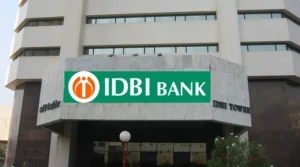🗞️ At a Glance
The Employees’ Provident Fund Organisation (EPFO) has frozen the FY 2024-25 interest rate at 8.25 percent, up 15 bps from last year and the highest since the pandemic. Good news? Only if the credit actually lands in your passbook on time. Historically, interest hits accounts six–nine months after March. Until then your retirement corpus is basically on forced “no-yield” vacation.
1️⃣ Why 8.25 % Is a Bigger Deal Than It Sounds
- Inflation Edge: Core CPI is hugging 4.3 %; a 8.25 % nominal return still means ~4 % real growth—fat by debt-fund standards.
- Political Optics: General elections loom in 2026. A juicy EPF rate pleases 27 crore salaried voters without blowing the fiscal deficit.
- EPFO Surplus Math: With ₹16 lakh-crore AUM, every 10 bps tweak moves ~₹1,600 crore in payouts. 15 bps up-shift = ₹2,400 crore extra interest obligation that EPFO swears it can fund via gilt gains.
- Signal to Banks: PSU banks paying 6.5 % on five-year FDs must decide whether to chase deposits or watch money migrate.
2️⃣ Timeline: From Board Nod to Balance Update
| 📆 Step | 🖋️ What Happens | ⏰ Typical Delay |
|---|---|---|
| March 2025 | CBT recommends 8.25 % | Same day |
| April–May | Finance Ministry ratifies | 4–6 weeks |
| June–August | EPFO sends rate to software vendor | 2–3 weeks |
| August–October | Data centres run interest calculation script overnight… thrice (bug fixes are real) | 4–6 weeks |
| October–November | Banks update passbooks/UMANG app | 1–2 weeks |
Reality Check: If you spot the credit before Dussehra, consider yourself lucky.
3️⃣ Winners & Whiners
😎 Potential Winners
- Long-Tenure Employees: Compounding on ₹20-lakh balances adds an extra ₹3,000+ compared with 8.10 %.
- Debt-Heavy Hybrid Funds: EPF bump forces them to hike returns or lose the “safe but sexy” battle.
- House-EMI Jugglers: Higher EPF balance can be partially withdrawn as home-loan pre-payment—8.25 % beats most mortgage rates post-tax.
😩 Probable Whiners
- Small Finance Banks: Their star 8-percent FD is no longer headline-grabbing.
- Corporate Treasury Desks: Employees now question why company PF trusts still stick to 7.5 %.
- Crypto Influencers: Hard to pitch “guaranteed 10x” when EPF finally looks respectable.
4️⃣ How 8.25 % Stacks Up Against Other “Safe” Havens
| 💼 Product | 💰 Return (Pre-Tax) | 🔒 Lock-In / Liquidity | 📝 Taxability |
|---|---|---|---|
| EPF (FY 25) | 8.25 % | Withdrawal after 5 yrs service; partial loans OK | Tax-free (interest + principal) if service ≥ 5 yrs |
| PPF | 7.1 % (quarterly-reset) | 15-yr lock-in, partial from yr 7 | Entirely tax-free |
| SSCS (Senior Citizens Saving) | 8.2 % | 5 yrs, extendable | Interest taxable |
| 5-Yr Tax-Saver FD | 6.5 – 7.2 % | 5-yr lock-in | Interest taxable |
| RBI Floating-Rate Bonds | 8.05 % (till Dec 25 reset) | 7-yr lock-in | Interest taxable |
| NPS Tier-I (Avg Debt Scheme) | 8.5 – 9.0 % (historical) | Till age 60 | 60 % corpus tax-free on exit |
Post-Tax Reality: For a 30 %-bracket worker, EPF crushes taxable FDs by nearly 200 bps.
5️⃣ Payroll & HR Corner: What You Must Plan
- Higher Basic Salary? Greater EPF return nudges employees to lobby for a larger Basic component rather than allowances.
- VPF Top-Up Season: Expect a queue of workers pushing voluntary PF to the 100 % limit before June payroll cutoff.
- TDS Rejig: Interest credited in November often throws Form 26AS off balance; HR must pre-flag possible tax liability mismatches.
- Arrear Calculations: Increment back-pay due after March attracts retro EPF deductions—HR software must apply 8.25 %, not 8.15 %.
6️⃣ Macro-Nerd Dive: Can EPFO Afford the Splurge?
- Portfolio Mix: 85 % debt (g-secs, SDLs, AAA PSU bonds) and 15 % equities (ETFs).
- Rising Yield Tailwind: 10-yr g-sec averaged 7.15 % in FY 25; mark-to-market gains cushion the 8.25 % promise.
- Equity Booster: Nifty 50 up 22 % FY-to-date; EPF’s ETF slice prints mark-to-market joy.
- Default Risk Radar: EPFO hasn’t touched fresh NBFC junk since IL&FS 2018—they’re sleeping better than CoCo bondholders.
Bottom line — the maths works today; the risk is if bond yields nosedive next year but CBT still chases populist optics.
7️⃣ Five Burning FAQs (So You Outsmart the Office PF Guru)
Q1. When exactly will interest show up in my UMANG app?
Historically between late September and early November. Screenshot when you see it—bugs do reverse.
Q2. Should I shift extra cash from RD to VPF?
If your horizon > 5 yrs and you’re in 20 %+ tax bracket, VPF wins post-tax every time.
Q3. Any chance govt slaps tax on EPF interest above ₹2.5 lakh/year again?
That rule already exists, but applies only to employee contributions > ₹2.5 lakh p.a. (₹5 lakh if no employer share). Plan VPF accordingly.
Q4. Does higher EPF rate hint at repo cuts?
No direct link. EPF rates lag bond yields; RBI policy is a different soap opera.
Q5. Can startups opt out of EPF now that returns look pricey for cash-flow?
Nope. Statutory ceiling ₹15k basic wages still applies; startups must comply unless legally exempt.
8️⃣ EduInvesting Take 🥳
Setting EPF interest at 8.25 % is New Delhi’s budget-friendly way to hand out Diwali sweets without risking a Moody’s downgrade. Savers cheer, debt funds sulk, and HR teams brace for extra VPF forms.
But the real conundrum isn’t the rate—it’s the credit lag. Until bytes hit the ledger, your corpus lounges in a nirvana state earning zilch while EPFO’s treasury desk laughs all the way to the gilt auction. So keep that optimism… and maybe a gentle reminder email to your finance minister meme group come September.
Remember: in personal finance, time in the account beats timing of announcements. Now excuse us while we calculate how many extra plates of pani-puri one year of 8.25 % can fund.
📅 Author & Date
Prashant Marathe | 7 June 2025
🏷️ Tags
EPF Interest Rate 2025, EPF 8.25 Percent, EPFO Interest Credit Delay, Retirement Planning India, EduInvesting Satire
Meta Description (150 chars)
EPF interest is locked at 8.25 % for FY 25—the highest in four years. When will it hit your account, and how does it compare to FDs, PPF, NPS?




















